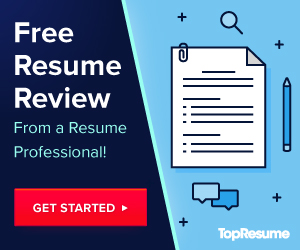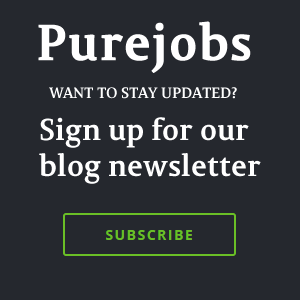Every year I give my forecast for the top 10 workplace trends for the upcoming year. The purpose is to help prepare organizations for the future by collecting, assessing and reporting the trends that will most impact them. You can read my predictions from 2013, 2014, 2015, 2016 and 2017. These trends are based on hundreds of conversations with executives and workers, a series of national and global online surveys and secondary research from more than 450 different research sources, including colleges, consulting firms, non-profits, the government and trade associations.
All economic indicators show a positive view of the U.S. economy in 2018. The Bureau of Labor Statistics predicts that the unemployment rate will continue to decline from 4.3% in 2017 to 4.2% in 2017, with an overall projection of 20.5 million jobs being created by 2020. While the majority of occupations are projected to grow, those that will experience the fastest growth next year are healthcare, personal care, social assistance and construction. The workforce participation of older workers will increase, yet the overall labor force growth rate will decline by next year. U.S. salaries are predicted to increase from 3.1% in 2017 to 3.2% in 2018. Gross domestic product is expected to increase from 2.3% in 2017 to 2.5% in 2018. The top workplace trends for 2018 include:
1. Leaders encourage more human interaction.
Companies will continue to promote their workspaces and design them to facilitate interpersonal relationships between employees. IBM stopped their remote-working program, pushing thousands of employees from core groups that support their brands back to the office. Apple's innovative new facility is designed to promote worker relationships, idea sharing and collaboration. Google Cafés are designed to encourage interactions between employees across departments and teams. All three companies have found that when employees bump into each other in physical environments, it sparks creativity and relationship building that leads to positive outcomes. One study found that moments of conversation between co-workers increases performance by 20% and another study uncovered that 72% of employees who have a best friend at work are more satisfied with their job. In our research, in partnership with Randstad, we found that Gen Z's and millennials choose in-person conversations over using technology and prefer corporate offices over telecommuting. While technology can make us more efficient, and feel highly connected to one another, it will never replace face-to-face conversations. Leaders who encourage personal connections will have more committed, satisfied and productive workers. Researchers Mahdi Roghanizad and Vanessa K. Bohns found that one face-to-face conversation is the equivalent to thirty-four emails. You will see more companies pull back their telecommuting programs next year and leaders who put more emphasis on phone calls, video conferencing and in-person meetings.
2. The next wave of learning credentials.
One of the most disrupted industries is education, with more third parties offering courses, credentials and certifications than ever before. There is now an abundance of online courses provided by LinkedIn Learning, Coursera, edX, Udemy, Udacity, The Khan Academy and others. Pew Research reports that self-directed learning is driving the need for new credentialing systems. More employees will be accepting different types of credentials as they seek to build diverse talent pools and expand their reach. Almost three out of every four adults agrees that individuals have the responsibility to make sure that the workforce has the right skills and education to be successful in today's economy compared to only 52% of colleges and 49% of employers. Younger generations are starting to resist the traditional degree due to the ever increasing cost of tuition, which grew by nine percent from last year for four-year public schools. Some are avoiding college altogether and are pursuing these free or low cost online courses that provide enough education on important skills to get by. As companies continue to accept non-traditional credentials, students will be able to avoid debt and study at their own convenience, without fear of unemployment.
3. Companies focus on upskilling and retraining current workers
While the political discussion is focused on bringing manufacturing jobs back to America, and the news media continues to publish articles on how automation will eliminate jobs, we should really be focused on the growing skills gap. There are currently 6.2 million job openings in America that are unfilled, which is up from 5.6 million during the same time in 2016. Companies can't find the right workers, that have the right skills, at the right time, which has slowed growth in the economy. The National Federation of Independent Business reports that 45% of small businesses were unable to find qualified candidates to fill job openings and 60% of all employers have job openings that stay vacant for twelve weeks or longer, which costs them $800,000 annually in lost productivity and advertising fees. In our current economy, change is happening faster than ever before and the half life of a learned skill is a mere five years. As more industries become disrupted, companies are evolving their business models to align with new customer demands. AT&T, for example, notified 100,000 of their employees that their job roles wouldn't be relevant in ten year and then subsequently created the Workforce 2020 initiative, with over $1 billion invested, to help upskill their employee base. We not only lack the right set of skills, but the ones we currently have are becoming less relevant over time. Almost half of all tasks people are paid to do everyday are at risk of being automated and multiple studies show that total headcount will be decreased by between 12% and 50%. Employers will be investing more money into their training and development programs in 2018 in order to fill their skills gaps and reach their full capacity. IBM found that 84% of employees at the best performing organizations are receiving the training they need compared to only 16% at the worst performing ones. When teams are appropriately trained, companies save an average of $70,000 annually and receive a 10% increase in productivity. As Generation Z enters the workplace, they face an even greater skills gap, where 65% of the jobs they will need to fill don't even exist yet.
4. Artificial intelligence becomes embedded in the workplace.
The topic with the biggest buzz in HR circles is AI because there is both excitement and fear around the topic as it relates to how we do our jobs. Almost every new device and service will contain AI in the next few years. Google, Facebook, Amazon, Microsoft, Apple and others are focused on creating smarter products using AI and there are now over one thousand AI vendors supporting all types of companies and people. As part of the World Economic Forum "Global Shapers Study", they asked millennials what the next big technology trend is globally and almost a third said AI. Chatbots, which are fueled by AI, will continue to permeate the workplace in 2018. Chatbots, which are programs that facilitate text conversations, are expected to save companies over $79 million dollars in salary expenditures annually, and the efficiencies received by using them are in excess of 30%. Nearly 20% of companies have already deployed chatbots in the workplace, with an anticipated 57% by 2021. Companies are using chatbots as personal assistants, for on-demand customer support, to mine data, streamline business processes, recover product information and to answer employee questions. For example, at Overstock, they have a chatbot for HR called Mila, that lets managers know when employees are sick and at Intel, they use an HR virtual assistant that answers questions about pay and benefits. As more employees see the efficiency benefits of chatbots, and AI, they will be adopted at a more rapid pace.
5. Financial and mental wellness get prioritized.
With 78% of Americans living paycheck to paycheck and student loan debt at over $1.4 trillion, workers are struggling and it's affecting their health. Workers are stressed out, burned out and it's affecting not only their productivity but their satisfaction on the job. Northwestern Mutual reports that more than a quarter of millennials say financial stress affects their job performance and made them feel physically ill and depressed. Nearly half of employees have financial concerns, causing them to lose an average of six productive work days annually. As a result, there are numerous companies that are helping employees payback student loans to ease their financial burdens, including Fidelity, PwC, Aetna, Penguin Randomhouse and Chegg. Mental health, which has long been a stigma in the workplace, is now becoming something that is more common and accepted by leaders. Now HR is taking on the role of mental health counselors, helping support employees who have all sorts of mental health issues like depression, anxiety, bipolar and ADHD. While many of these disorders are hidden, 84% of employees have experienced physical, psychological or behavioral symptoms of poor mental health. Symptoms like depression can result in about five missed work days and 11.5 days of reduced productivity every three months, costing the U.S. 200 million lost workdays annually, resulting in $17 to $44 billion in lost productivity overall. After the story about Madalyn Parker, a web developer whose manager was accepting of her taking a mental health day, went viral, many companies are starting to have real serious conversations around the topic. PwC, for example, provides 24/7 access to counseling, a mental health toolkit and a group of six mental health advocates to support the de-stigmatization of mental health in the workplace.
6. Employee burnout causes more turnover.
Employees are burned out from working longer hours with no additional compensation, while companies are posting record profits. Full-time employees work an average of 47 hours per week and the tenure has decreased from 4.6 in 2016 to 4.2 in 2017. According to Right Management, over a third of workers get after-hours email from management and almost 10% get emails on vacations. Technology has expanded the workday and forced employees to spend more time during work for the same salary and without a bonus. In a study, in partnership with Kronos, we found that almost half of HR leaders say employee burnout is responsibility for up to half of their annual workforce turnover. They believe burnout is caused by unfair compensation, an unreasonable workload and too much after-hours work. Even outside of America, work creep has become a major employment issue, so much so that the French government introduced legislation that gives workers "the right to disconnect". In order to prevent employee burnout, companies are focused on creating wellness and flexibility programs that allow them to take time off and stay healthy.
7. Workforce decisions sway consumer behavior.
For years, HR and talent leaders have desired a seat at the table, influencing the CEOs agenda. Now, with the advent of big data and new research by my firm and others, they can finally draw the connection between a positive employee and candidate experience and actually revenue. In a study with CareerArc, we found that candidate experience actually sways consumer behavior. 64% of job seekers say that a poor candidate experience would make them less likely to purchase goods and services from their employer. While 91% of employers agree that candidate experience can impact consumer-purchasing decisions, only 26% measure this effect. According to a separate study by CareerBuilder, they found that 58% of employees are less likely to buy from a company to which they've applied if they don't get a response to their application. Aside from candidate behavior, when firms don't invest in their hiring and training programs, they lose out on top talent, which ends up costing money and productivity.
8. Companies take diversity more seriously.
While the subject of diversity has become the topic of conversation for years, it has almost reaching a tipping point, where companies are investing money in improving the composition of their workforce. This is in part due to the virality of one Google engineers ten-page document that went against his employers diversity initiatives. He argues that women are underrepresented in technology not because they face bias and discrimination in the workplace, but because of the psychological differences between genders. SAP reviewed their own gender pay gap, taking into account several factors such as years of experience, past performance, and employees' locations. When they found discrepancies in gender pay, adjustments were made and they spent about $1 million increasing salaries to close the gap. More companies are creating employee resource groups to support all types of diversity, including gender, ethnicity and age. They feel like these support groups will help promote the positive aspects of having a heterogeneous employee base. We will see more companies, especially those in Silicon Valley take major strides next year to promote diversity as they have fewer than 5% African American employees and are constantly scrutinized.
9. The deregulation of labor laws.
Under the current administration, more labor laws are being deregulated, which is costing companies money, and impacting their ability to promote diversity and protect worker rights. In a study in partnership with Kronos, we found that over half say that each regulatory change costs their organization up to $100,000 on average. More than two-thirds say that compliance has become more expensive in the past year, and 74% say compliance is more expensive than a decade ago. Under the current administration, 64% said they anticipate the complexity of labor-related regulations will be more complex, while only 14% said they would be less complex. Nathan Mehrens is running the DOL Regulatory Reform Office, which is designed to reconsider government regulations and remove a lot of what Obama made into Law. The White House is undoing a regulation that requires companies to report worker compensation by race, gender and ethnicity and another one that forces companies to log workplace injuries. These deregulations with both cost companies money, and save money, at the same time - but most are really bad for workers.
10. The aging workforce.
The workforce is continuing to age, with baby boomers living longer than previous generations and retiring later. About three in every four Americans plan to work past retirement age and almost two-thirds said they will continue to work part-time. Pew Research estimates that the number of people 65 and older is projected to triple by mid-century from 531 million in 2010 to 1.5 billion by 2050. The population of seniors in the U.S. is expected to more than double from 41 to 86 million during this time and almost triple in China from 8.3% in 2010 to 24% by 2050. About ten thousand baby boomers turn 65 each day, yet fewer than half said they expect to retire by 65. Just over a third of companies are preparing for this projected increase in older workers and it will come at a major cost to companies in the form of retirement benefits, healthcare and equal opportunity. As baby boomers maintain their leadership positions, it will be harder for younger workers to rise up in their organizations and could lead to higher turnover, stress and frustration.











